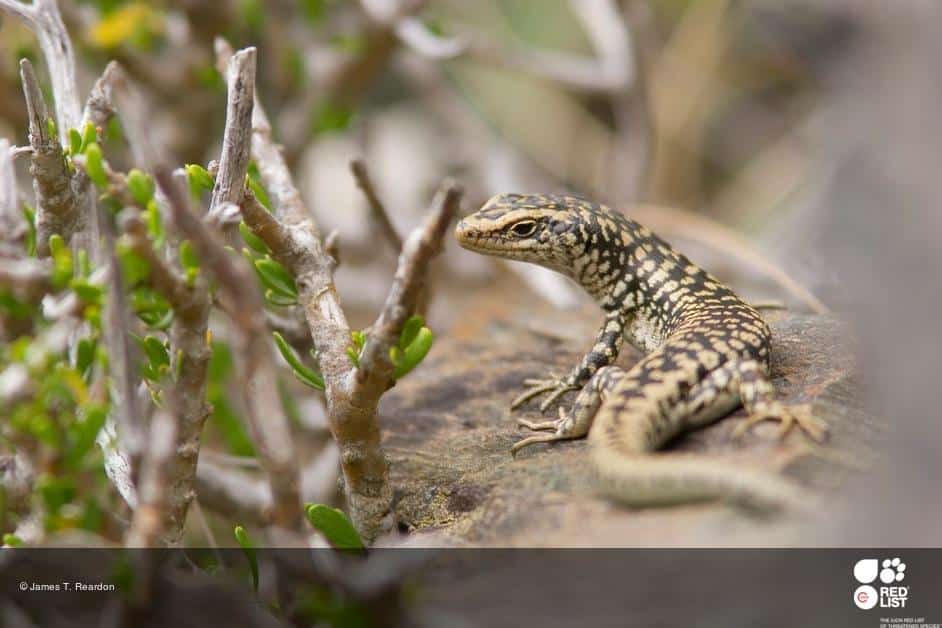

The largest study ever conducted on the extinction risk of reptiles on the International Union for Conservation of Nature (IUCN) Red List of Threatened Species warned that 21 percent of all reptile species worldwide are threatened with extinction, which could have a “devastating” effect on the planet’s ecosystems, The Guardian reported.
Led by NatureServe, the IUCN and Conservation International, the study compared the conservation needs of 10,196 reptile species with those of birds, mammals and amphibians, according to a press release by NatureServe. The specific subjects of the study were crocodiles, turtles, snakes, lizards and tuatara, a reptile native to New Zealand that is the only living representative belonging to a lineage that evolved about 200 to 250 million years ago, during the Triassic period.

“We would lose a combined 15.6bn years of evolutionary history if each of the 1,829 threatened reptiles became extinct,” said manager of the biodiversity assessment unit at the IUCN and Conservation International Neil Cox, who was the study’s co-leader, as reported by The Guardian. “This is evolution that we could never get back. It would be a devastating loss.”
The study, “A global reptile assessment highlights shared conservation needs of tetrapods,” was published in the journal Nature. The Global Reptile Assessment was conducted by 52 experts representing 24 countries across six continents, and in the last 17 years it has received contributions from more than 900 scientists, The Guardian reported.
It may come as a surprise that most reptile species live in forests, where they face the same threats as other woodland creatures, like logging and the destruction of trees to make way for agriculture. The researchers found that 14 percent of reptiles that live in arid habitats like scrubland and deserts are at risk of extinction, compared with 30 percent of those that live in forests.

Invasive species are a major threat to lizards native to islands, while half of turtles and crocodiles are at risk of extinction. For them, hunting is the primary threat.
Conservation efforts directed at birds, amphibians and mammals were “more likely than expected” to benefit many reptiles threatened with extinction, the study found, as stated in the press release.
“I was surprised by the degree to which mammals, birds and amphibians, collectively, can serve as surrogates to reptiles,” commented chief zoologist and senior conservation scientist at NatureServe Dr. Bruce Young, who was co-leader of the study, the press release said. “This is good news because the extensive efforts to protect better known animals have also likely contributed to protecting many reptiles. Habitat protection is essential to buffer reptiles, as well as other vertebrates, from threats such as agricultural activities and urban development.”
The 1,829 reptiles that are currently threatened with extinction are living examples of an important branch of the world’s evolutionary history — 15.6 billion years total, with innumerable environmental adaptations.
“The results of the Global Reptile Assessment signal the need to ramp up global efforts to conserve them,” Cox said, according to the press release. “Because reptiles are so diverse, they face a wide range of threats across a variety of habitats. A multifaceted action plan is necessary to protect these species, with all the evolutionary history they represent.”
Reptiles have many benefits for ecosystems, from helping manage populations of rats and mosquitoes to aiding seed dispersal, particularly on islands, The Guardian reported. There are more reptile species under threat of extinction than bird species, said head of wildlife recovery at the Zoological Society of London Mike Hoffmann, who was one of the scientists involved with the study.
“This global assessment is a key beginning to understanding reptile conservation needs. Now we know where the priorities are and what the threats are that we need to ameliorate. There is no longer any excuse for leaving reptiles out of conservation planning and implementation efforts worldwide,” Young added, as Reuters reported.

 233k
233k  41k
41k  Subscribe
Subscribe 